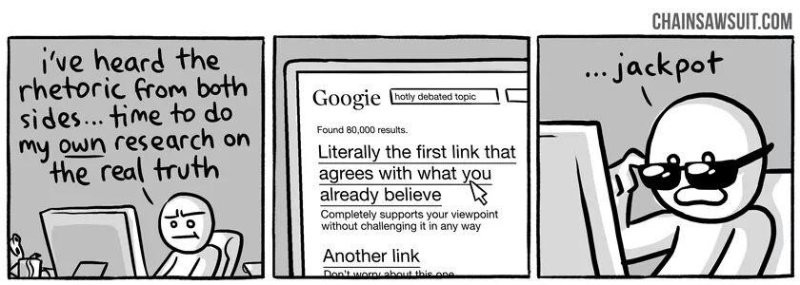It is very difficult to consistently invest profitably. Investment decisions are complex and as such are riddled with cognitive biases. Over a long enough time horizon even the most seasoned investors will succumb to many widely studied cognitive biases. They are human after all. This article discusses the cognitive biases that thwart investors. Some of these biases also prevent investors from sticking to tried and true investing advice.
The Investment Process
Investment decisions can be made in many different ways. Most of them involve answering different flavors of the same fundamental questions.
Navigating to the answers for each of these questions is fraught with risk of cognitive biases. The more these biases play into an investor’s decision the more likely the investor’s conclusions may be invalid. Below, I’ve listed some of the most common cognitive biases investors should be aware of. Additionally, I’ve included a brief example of an investment tactic or system that can mitigate the risk of this bias.
Overconfidence Bias
Overconfidence bias is a belief that one’s ability to beat the market is better than it truly is. More fundamentally, this effect means investors are more confident in their conclusions than they should be.
Reducing the downside of being wrong is one way to mitigate this bias. Investor’s should always ask the question, “what if I am wrong?” and be comfortable with the answer to that question. Practically, setting (and more importantly, sticking to) position size limits can mitigate the effects of overconfidence. Setting reasonable limits ensures that investors do not “bet the farm†and lose everything if they are wrong. The risk of overconfidence is further mitigated by having a nuanced framework on how to size positions based on confidence level in the position. Forcing oneself to weigh the relative confidence of positions against one another encourages reflection on what one knows and does not know. Finally, incorporating consistent and measurable factors into the investment process will make it easier to spot overconfidence than if the entire process is qualitative. Occasionally revisiting past decisions and reviewing one’s success rate is often a humbling way to increase returns in the long run.
Survivorship Bias
Survivorship bias is most visible when investors are evaluating investment managers or making broad claims about the effectiveness of active management. The idea is that if hundreds of thousands of investors are betting on the markets, some will build an excellent track record not due to skill, but due to luck. This is a big reason investors often see the common disclaimer: “past performance is not necessarily indicative of future results”.
Thoroughly understanding an investment manager’s investment process can mitigate the impact of survivorship bias. Investors should pay careful attention to the reasons a manager outperformed and not merely to the fact that they did outperform. An investor can develop a basis by which to differentiate the contribution of skill vs luck to the manager’s returns by deeply understanding the rationale behind the performance. Essentially, one must analytically assess the likelihood that a manager’s success was a byproduct of skill instead of luck. Separating the alpha and beta components of a manager’s returns can be a quantitative starting point for this discussion.
Anchoring

Anchoring is the tendency to place substantial (unjustified) weight on the first piece of information acquired in an investment decision. This often manifests itself as confirmation bias (don’t think I’ve forgotten) in favor of the original investment thesis. The current price of an investment is also an anchor that is frequently overvalued in decision-making
Gathering informed opinions from others who have not yet been anchored is a method to mitigate the anchoring effect. Furthermore, managing an investment process to collect evidence before forming a hypothesis can also mitigate the effects of the anchor. A well-defined framework can specify which facts must be collected and what conclusions must be drawn without the need to start with questions about an existing hypothesis. Finally, a clear rubric assigning a weight (or ranges of weights) to various conclusions will limit anchor points from taking on more weight than they should.
The bandwagon effect
The bandwagon effect occurs when investment decisions are unduly influenced due to the conclusions of others. Imagine an investor who receives a stock tip from a friend. The investor may believe that his friend made an informed investment decision. In reality, that friend heard from his friend, who heard from her friend. This creates a situation where an investor may believe that 10 other disciplined investors did the work when in fact only one or two did. Many hedge fund analysts share their research with one another and as a result they have short (or long) positions in the same concentrated list of names (e.g Valeant).
Following a disciplined investment process reduces the risk of herding. It is reasonable to weigh the opinions of others (based on your trust in them and your knowledge that the work they did deserves that trust). The risk, however, is overvaluing that opinion, especially when one has little understanding of why the recommendation was made in the first place.
Loss Aversion
The idea behind loss aversion is that humans have more aversion to loss than they have affinity for a gain of the same magnitude. The disposition effect is a specific case of loss aversion exhibited by investors. It is the tendency for investors to sell shares that have appreciated and hold onto shares that have an unrealized loss. No one likes taking a loss. The stock will bounce back eventually, right? right?
Setting price limits and targets (though this is not without risks of it’s own) is a structured way to mitigate the impact of this effect. These targets and limits may be modified as new information is acquired. It is important not to let the disposition effect drive those changes, however, and ensure that the original investment process for calculating entry and exit points is followed. Finally, subordinating the weight placed on unrealized gains and losses (in fact an argument can be made that this should have almost no impact) can reduce the risk of falling prey to this bias.
Confirmation bias

Ah yes, the mother(fucker) of them all! Confirmation bias is the focus on finding and weighing more heavily, evidence that supports one’s initial hypothesis vs evidence that disproves it. Investors can browse their Facebook news feed for hundreds of daily examples of this phenomenon.
As described above, adhering to the investment framework goes a long way in reducing confirmation bias. Adding detail around what criteria to use and how to measure it will reduce the likelihood that salient evidence is ignored. Additionally, playing devil’s advocate has helped substantially in my experience. Investors should independently try to make the strongest possible case for the investment as well as the strongest possible case against the investment. The investor can then think carefully about a trial where their life is at stake — they must make a case to a judge to go long or short. Which side is the investor most comfortable defending? This admittedly grim thought exercise compels decision-makers to carefully confront evidence on both sides.
Other investing biases
I’m tired of typing, so here is a laundry list of other biases to be cognizant of when investing:
Availability bias
Conservatism bias
Zero-risk bias
Pseudocertainty bias
Outcome bias
Nominal money illusion
Unconscious Bias is Everywhere
As should be evident, many of our investment decisions are steeped in unconscious bias. It is nearly impossible to remove all these biases from our decision-making. If we are cognizant of the pitfalls, however, we are far better armed to reduce the negative impact of the biases.
One reason I am a huge proponent of roboadvisors is because they take everyday decisions out of our hands, frequently saving us from ourselves. A number of the systematic approaches outlined above to mitigate unconscious bias are programmed into Roboadvisors. The specifics of the algorithms have been rigorously tested.
Investing is hard. Good luck out there.